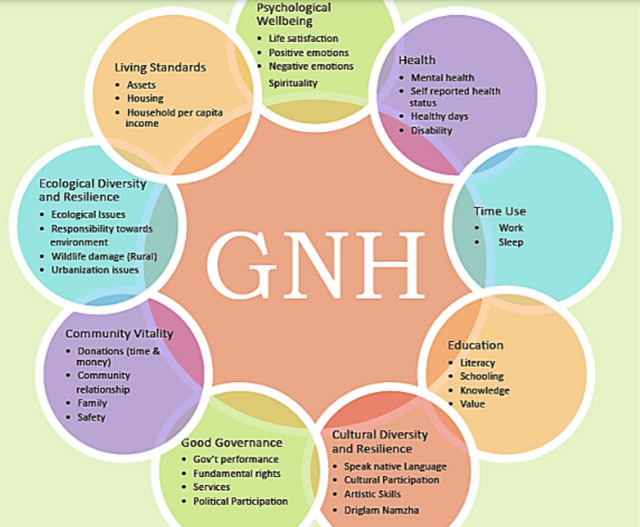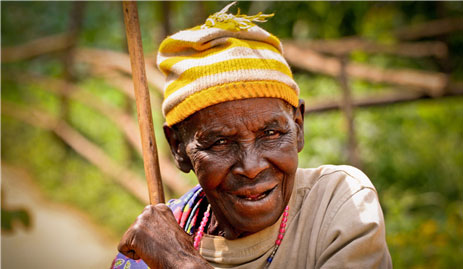
COVER STORY | THE INDEPENDENT | Ugandans aged 60 years and above are the unhappiest segment of our society, according to the latest World Happiness Report. These are people who have lived through all of the country’s tumultuous regimes, from Obote One, Idi Amin, Obote Two, and now President Yoweri Museveni.
The case of Uganda’s unhappy old generation, although not unique, goes against the direction of global happiness among the elderly described by the 2024 edition of the World Happiness Report (WHR).
Comparing generations, the report finds that people born before 1965 are, on average, happier than those born since 1980. It says evaluation of one’s own life among people born between early 1980s and late 1990s (Millennials) decreases with each year of age. Also, globally, young people aged 15 to 24 report higher life satisfaction than older adults, the report finds.
So why are Uganda’s elder so unhappy? And why should that matter?
According to the World Happiness Rankings, happiness is an aspiration of every human being. Measuring it can, however, also be a measure of social progress. As a measure of the wellbeing of the people, it covers two aspects; the emotional expression of how one feels (“Were you happy yesterday?”) and also an evaluation of one’s life (“Are you happy with your life as a whole?”).
A sick poor person might say they are happy when a person they like visits them. That is an emotion. But the same person can never say they are happy with their life when confined to a hospital bed; that is an evaluation.
While rich countries have tended to measure human national development success by Gross Development Product (GDP) figures, there is a growing push to measure the Gross National Happiness (GNH) instead.
Governments are increasing focusing on the wellbeing of their citizens, rather than on the GDP figures. The United Arab Emirates has a ministry of Happiness and Wellbeing.
For the seventh year in a row, Finland is the “happiest” country, followed by Denmark, Iceland, Sweden, and Israel. The world’s “unhappiest” nation is Afghanistan.
The World Happiness Index is derived from life evaluations reports from the Gallup World Poll.Based on answers to the main life evaluation question on the Cantril Ladder, the poll findings provide the basis for the annual happiness rankings.
The Cantril Ladder asks respondents to think of a ladder, with the best possible life for them being a 10 and the worst possible life being a 0. They are then asked to rate their own current lives on that 0 to 10 scale. The rankings are then inferred from nationally representative samples in the more than 140 of the 195 countries on the globe that are surveyed. To improve accuracy of findings, the researchers use averages over three years.
Critically, however, the World Happiness Index offers an analysis of happiness trends across different ages and generations.
According to the report, from 2006 to date, there has generally been little change (0.05) to the main evaluation question, across all age groups in Uganda. However, a closer look reveals that more change has occurred among the young under 30 years (0.36). They say they are happier.
Meanwhile, evaluation of life or happiness has changed little (0.092) for those aged 30-44 years. But it has been bigger for those aged above 60 years (0.741). A significantly big change in life evaluation (0.56) is also noticed among those aged 45-59.
The report is divided into sections that relate to happiness as measured by life evaluations and emotions, showing their levels and changes for the younger below 30 years, the older (60+), and those in between divided into two groups, aged 30-44 and 45-59.
Measuring happiness
These happiness scores are based on each individual respondents own assessments of their lives, in particular their answers to the single-item Cantril ladder life-evaluation question.

However, the researchers observe data on six other variables (GDP per capita, social support, healthy life expectancy, freedom, generosity, and corruption) and estimates of their associations with life evaluations to help explain the variation of life evaluations across countries, much as epidemiologists estimate the extent to which life expectancy is affected by factors such as smoking, exercise, and diet.
Taken together, the six variables explain more than three-quarters of the variation in national annual average ladder scores across countries and years. The six variables were originally chosen as the best available measures of factors established in both experimental and survey data as having significant links to subjective well-being, and especially to life evaluations.
For example, the researchers say they can infer that positive emotions play a strong role in supporting life evaluations, and that much of the impact of freedom and generosity on life evaluations is channelled through their influence on positive emotions.
According to them freedom and generosity have large impacts on positive affect, which in turn has a major impact on life evaluations.
For the analysis by generation, the report makes a three-way split: those born before 1965, 1965-1980, and after 1980.
However, the report acknowledges, the best separation points for generational differences will differ from country to country, depending on their key events. In the case of Uganda for example, those over 60 years represent people who have lived through all of the country’s tumultuous history from Obote One, Idi Amin, Obote Two, and now President Yoweri Museveni.
The next group are those who lived through Obote Two and Museveni. And the last are those who have lived only under Museveni.
The report says living through past internecine violence, such as under Obote and Amin and now Museveni, leaves bigger scars on the lives of those who lived through them and therefore impacts the evaluation of individuals.
“Although Rwanda is not in the current rankings, its data from earlier years also confirms that past internecine violence leaves bigger scars on the lives of those who lived through them,” the report says. It describes how, in Rwanda, the average life evaluation of those 60 and over is lower than that of those under 30 by nearly two-thirds of a point.
The age ranking are critical because they help to assess happiness at different ages. In some countries, such as Norway, Sweden, Germany, France, the United Kingdom and Spain, the old are now significantly happier than the young, while other countries show the reverse pattern.
Averaging across more than 40 countries in Sub-Saharan Africa, life evaluations are highest for the young, fairly similar in the two middle age groups, and then higher for males and lower for females in the 60+ age group.
On the African continent, Libyans are ranked as the happiest people at number 66 globally. Mauritius is at number 77, South Africa at 83, Nigeria 102, and Ethiopia 130. Many countries, including Rwanda, Burundi, South Sudan and Somalia in the East African region were not engaged in the research.
Happiness in East Africa
In the East African region, Kenya has the happiest people among those measured. It is ranked at number 114. Uganda is next at number 117, followed by Tanzania at number 131.
Uganda’s ranking on the Happiness Index has generally been improving in recent years. The worst rankings were recorded in the years 2015 and 2016 when the country placed at number141 and 146 respectively.

The survey’s coverage has been growing, from 149 countries in 2013 to 156 in 2018. Over that period the six East African countries have posted varied performance. In 2013 Uganda was ranked the happiest country in the east African region at number 120. Kenya was second happiest at 123, Tanzania third at 151, Rwanda fourth at 152 and Burundi at 153. South Sudan was not ranked.
In 2015 Uganda’s happiness declined and it moved to 141. Kenya’s also declined but at a slower pace and dropped two places to 125. Rwanda and Burundi were also less happy, declining to 154 and 157 respectively. Only Tanzania improved in happiness to rank 146.
In 2016 Uganda declined further to rank 146. Meanwhile, Kenya improved to 122 and Rwanda to 152. Burundi did not badge at 157 and South Sudan was ranked for the first. Despite raging civil war, South Sudanese were happier than Ugandans at rank 143. Tanzania declined in happiness to rank 149.
In 2017 the rankings were as follows; Uganda 133, Kenya 112, TZ 153, Rwanda 151, Burundi 154.And in 2018 Uganda has been ranked at 135, Kenya 124, TZ 153, Rwanda 151, and Burundi 156. South Sudan today is a very unhappy place, at rank 154; two positions from the bottom.
Happiness is complex
Happiness is a complex issue and what makes one happy may not excite another. According to one expert at that UNDP, if people report to be less happy or satisfied, for example, is it a result of worse conditions, or growing expectations?
But the economy level, a focus on happiness can push businesses to measure success by the bottom line plus other measurable such as on environmental and social benefits to their staff, community, and nation.
Research by Oxford University’s Said Business School has found that workers are 13% more productive if they are happy. The researchers focused on affective wellbeing – specifically, workers’ feelings of happiness as they experience it week-to-week, rather than as subjective wellbeing measure of say, job satisfaction.
The tiny Kingdom of Bhutan, located in the heights of the Himalayan mountain range between China and India, in 2008, the country enshrined the concept of Gross National Happiness in its constitution.
To define happiness in a measurable way, Bhutan created nine measurable areas – psychological wellbeing, health, education, time use, cultural diversity, good governance, community vitality, ecological diversity and resilience, and living standards. These are measured to empirical precision based on 33 indicators for the quality and depth of happiness each individual over time. They capture such positive emotions as calmness, compassion, forgiveness, contentment and generosity every week.
Bhutan sponsored Resolution 65/309, “Happiness: Towards a holistic approach to development,” which was adopted by the General Assembly of the United Nations on 19 July 2011, inviting national governments to “give more importance to happiness and well-being in determining how to achieve and measure social and economic development.”
The first World Happiness Report was presented on April 02, 2012 to review evidence from the emerging science of happiness for the ‘Defining a New Economic Paradigm: The Report of the High-Level Meeting on Well-being and Happiness.’
From 2024, the World Happiness Report is a publication of the Wellbeing Research Centre at the University of Oxford, UK.
The World Happiness Report is a partnership of Gallup, the Oxford Wellbeing Research Centre, the UN Sustainable Development Solutions Network, and the WHR’s Editorial Board. The report is produced under the editorial control of the WHR Editorial Board.
Today, the World Happiness Report is a worldwide report that advocates for more attention to be paid to happiness and wellbeing as criteria for government policy. This is mainly because of the growing realisation that the weakest and poorest members of society are carrying the heaviest weight of the greed and risk-taking of the richest and strongest.
The report reviews the state of happiness in the world today and shows how the science of happiness explains personal and national variations in happiness.
At the time the World Happiness Report was introduced in 2012, there was a growing dissatisfaction with government action or the lack of it. The world was in the midst of a major policy debate about what should be the objectives of those in government or public policy. The debate focused mainly on the role of the government in resolving problems faced by citizens that required laws and regulations to be adopted, implemented, and enforced by the government.
Most speakers agreed that the objective of public policy should be to ensure the wellbeing of the people and in July 2011 the UN General Assembly passed a historic resolution. It invited member countries to measure the happiness of their people and to use this to help guide their public policies. So the World Happiness Report became a measure of the extent to which the people of any country perceive their leaders to be working for or against their well-being.
On June 28, 2012, the United Nations General Assembly adopted Resolution 66/281, proclaiming the 20 March International Day of Happiness to be observed annually. The World Happiness Report is released annually around March 20th as part of the International Day of Happiness celebration.
Societal and personal well-being looks beyond what an economy produces, to areas such as health, relationships, education and skills, housing quality, finances and the environment.
The World Health Organisation has warned that by 2030, depression will be the leading contributor to the global disease burden. So the question of how countries can make their people happy is becoming more important.
 The Independent Uganda: You get the Truth we Pay the Price
The Independent Uganda: You get the Truth we Pay the Price




Level of happiness according to age levels